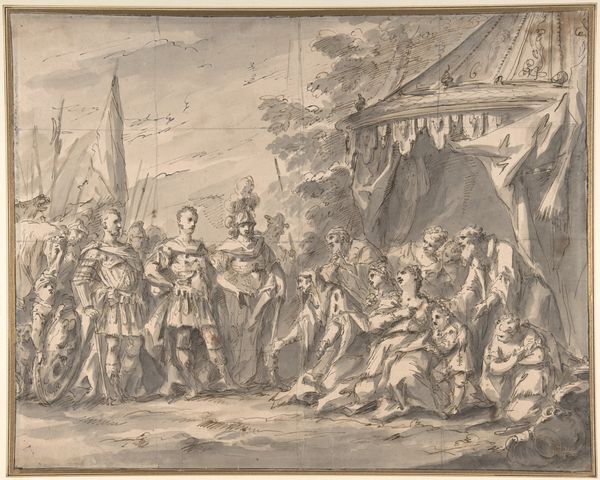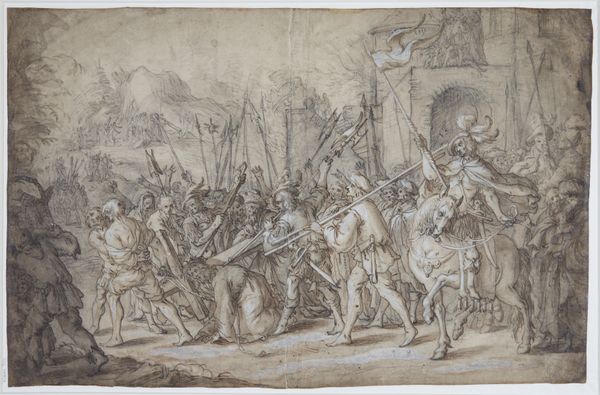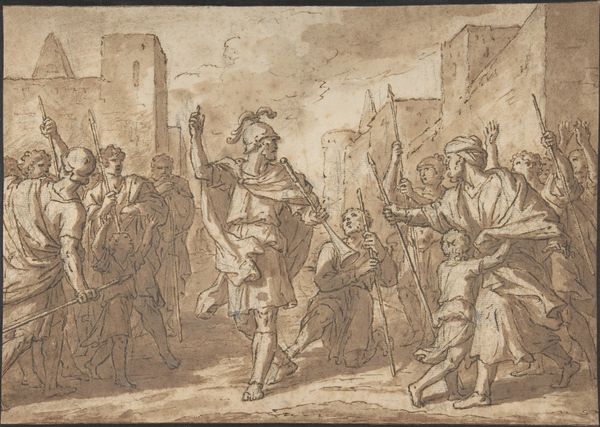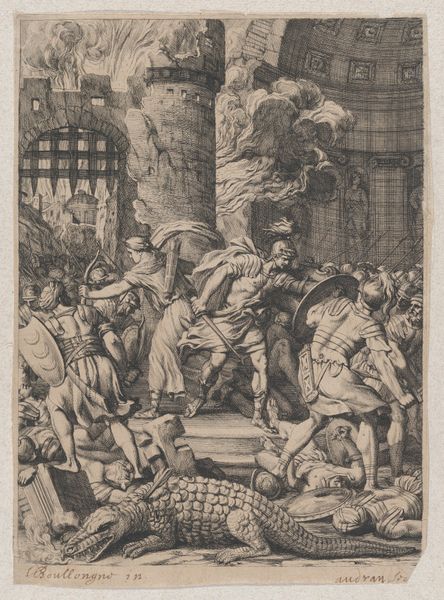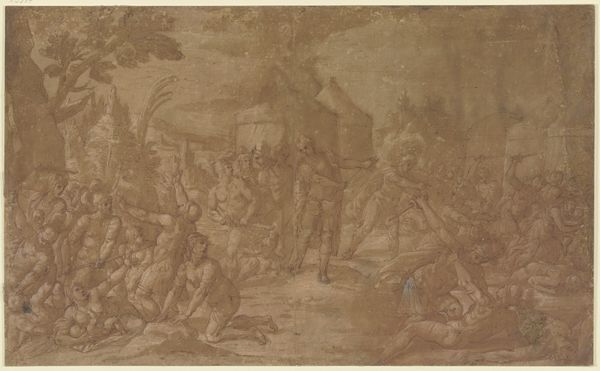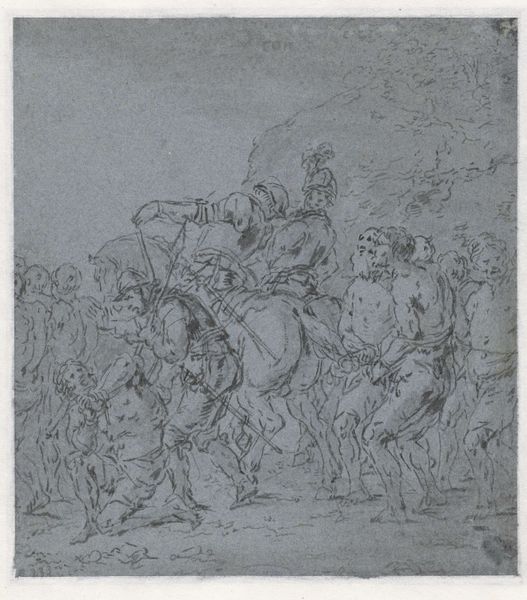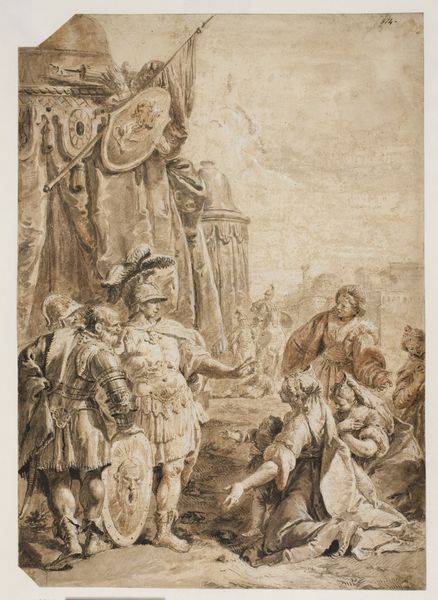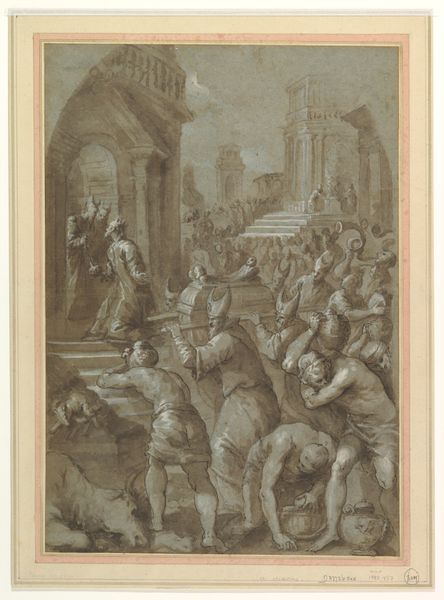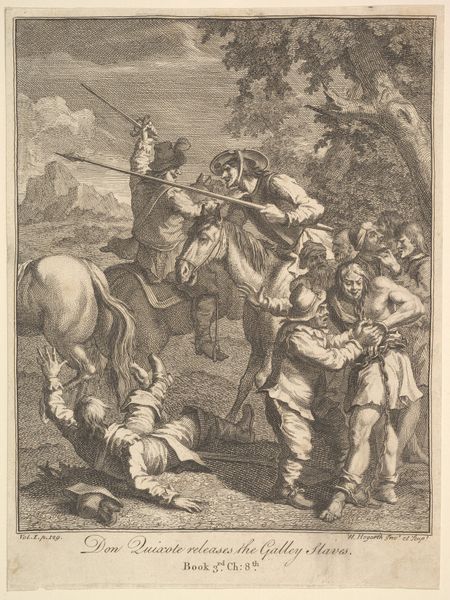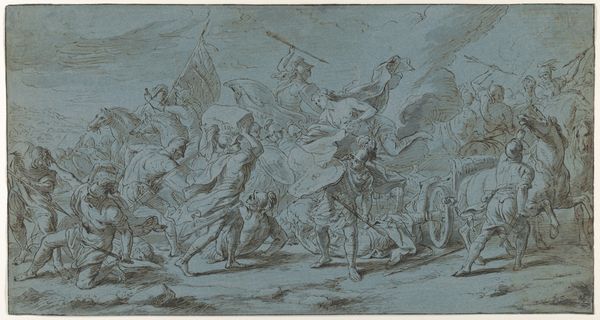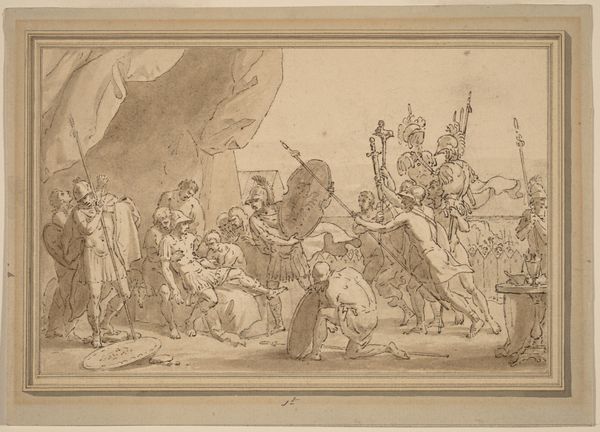
Copyright: Public Domain
Curator: Well, right away, I sense tension, an urgent story unfolding... it’s dynamic, with all these figures intertwined like branches in a storm. Editor: You're right; it practically vibrates. This is "The Reconciliation of the Sabines and Romans" by Januarius Zick, created in 1778. We see a tumult rendered with incredible energy using ink on paper. It resides here at the Städel Museum. Curator: Ah, yes. That title brings clarity, doesn’t it? Now, I'm imagining the air thick with dust and cries. It's a fragile medium for such a brutal scene, isn't it? But the fragility is kind of the point; a poignant reflection on conflict and fleeting peace. Editor: Indeed. Zick is deploying baroque drama here—note the sweeping diagonals and the emphasis on emotional expression, using dramatic diagonals and expressive figuration to amplify the sense of turmoil and ultimate concord. Curator: What I love most is how the women become almost statues of impassioned pleas. Like… Can we not, guys? I feel a personal pull towards that very question. A parent trying to intervene in a playground brawl, maybe? It's still… remarkably current, wouldn’t you agree? Editor: It’s fascinating how the formal constraints—the monochrome palette, the density of the composition—work to heighten the drama rather than diminish it. Consider the semiotic value of that central figure, poised between the warring factions, a linchpin in the composition, visually as well as narratively. Curator: So, while you are captivated by structure, for me, it's all about the human heart and messiness—that universal call for reason amidst the chaos. Maybe it speaks to our contemporary experience now? All sides digging heels, and maybe there is reconciliation there somehow. Editor: In the end, both responses illuminate something critical: a profound capacity to evoke emotionality from structured form, and to extract timeless questions of history, brutality, and reason. Curator: Leaving us, perhaps, a touch more reflective and little less... brawly? Here’s hoping, anyway!
Comments
No comments
Be the first to comment and join the conversation on the ultimate creative platform.

